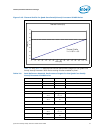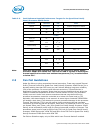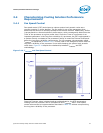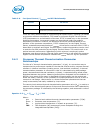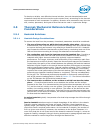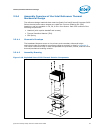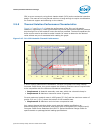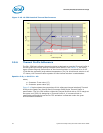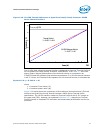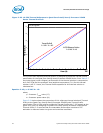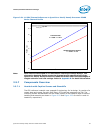
Thermal/Mechanical Reference Design
38 Quad-Core Intel® Xeon® Processor 5400 Series TMDG
2.5.2 Thermal Interface Material
TIM application between the processor IHS and the heatsink base is generally required
to improve thermal conduction from the IHS to the heatsink. Many thermal interface
materials can be pre-applied to the heatsink base prior to shipment from the heatsink
supplier and allow direct heatsink attach, without the need for a separate TIM dispense
or attach process in the final assembly factory.
All thermal interface materials should be sized and positioned on the heatsink base in a
way that ensures the entire processor IHS area is covered. It is important to
compensate for heatsink-to-processor attach positional alignment when selecting the
proper TIM size.
When pre-applied material is used, it is recommended to have a protective application
tape over it. This tape must be removed prior to heatsink installation.
The TIM performance is susceptible to degradation (i.e. grease breakdown) during the
useful life of the processor due to the temperature cycling phenomena. For this reason,
the measured T
CASE
value of a given processor can decrease over time depending on
the type of TIM material.
Refer to Section 2.5.7.2 for information on the TIM used in the Intel reference heatsink
solution.
2.5.3 Summary
In summary, considerations in heatsink design include:
• The local ambient temperature T
LA
at the heatsink, airflow (CFM), the power being
dissipated by the processor, and the corresponding maximum T
CASE
temperature.
These parameters are usually combined in a single lump cooling performance
parameter, Ψ
CA
(case to air thermal characterization parameter). More information
on the definition and the use of Ψ
CA
is given in Section 2.5 and Section 2.4.2.
• Heatsink interface (to IHS) surface characteristics, including flatness and
roughness.
• The performance of the TIM used between the heatsink and the IHS.
• Surface area of the heatsink.
• Heatsink material and technology.
• Development of airflow entering and within the heatsink area.
• Physical volumetric constraints placed by the system.
• Integrated package/socket stackup height information is provided in the LGA771
Socket Mechanical Design Guide.




